
Barcodes for Shopify & Shopify POS
Shopify is a platform that allows people and businesses to sell their products online. Shopify POS is a Point-of-Sale system that focuses on creating a shopping experience to combine in-person (brick and mortar) and online sales. The POS system is available to Shopify merchants from all across the world.
If you’re using Shopify for your business, it’s likely you have come across GTINs, or Global Trade Identification Numbers. A product’s GTIN can be encoded in varioustypes of barcodes. GTINs are internationally-recognized, unique identifiers that are used to store and locate product information. UPC, EAN, and ISBN barcodes all contain encoded GTINs. Barcodes like these are used by Shopify POS (and other Point-of-Sale systems), in a retail setting, for publishing products using the Google channel, and when listing a product using the Amazon sales channel.
If you don't know the GTIN for one of your products, you can request it from the manufacturer. If you’re the manufacturer of a product, you can find out how to get a GTIN for a product at the GS1 website.
Creating barcodes
Shopify offers additional apps that allow you to manage barcodes. However, these apps can be difficult to work with, hard to understand, and often they won’t work as expected. Using a dedicated barcode generator, like Barcode Producer, is a significantly easier and less time-consuming way to create Shopify barcodes for a product and its variants.
While Shopify’s app can only generate 8-digit barcodes, you can create 13-digit barcodes like ISBNs, UPC-A, and EAN-13 codes with Barcode Producer. After you create a barcode,, you can import the value into Shopify by navigating to Products, selecting the product, and then clicking the Edit button next to the product Variant you’d like to attach the barcode to.
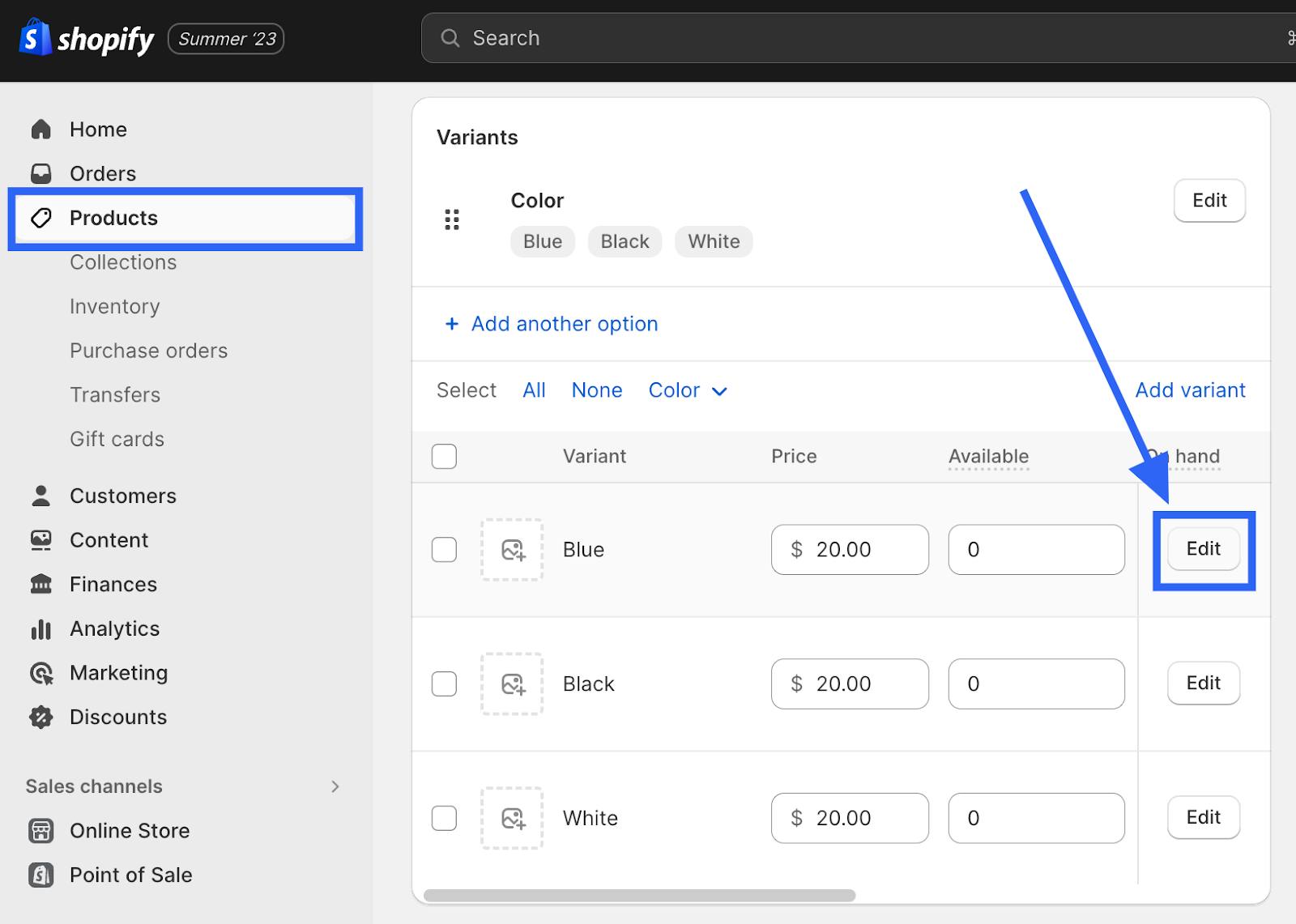
Next, simply type your new barcode value into the field labeled “Barcode” under Inventory. Be sure to click the Save button located at the top of the page to save your changes.
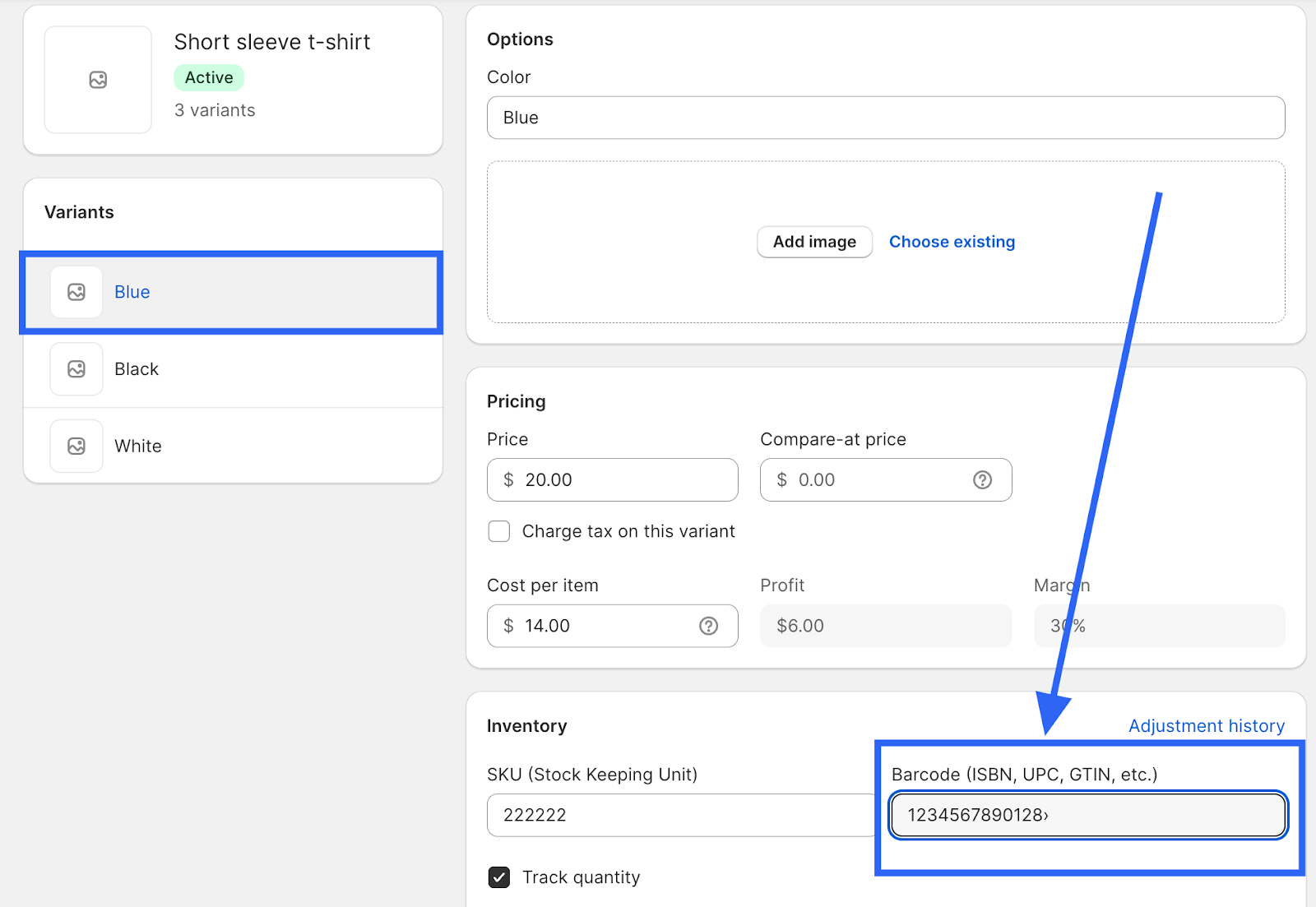
Alternatively, if you don’t already have your products in Shopify, consider using their Product CSV import feature to import a batch of products (and their barcode values).
Need to create your barcodes first? Here’s an article explaining how to create a barcode in Barcode Producer!
All you have to do is open the software, select your barcode symbology (the type of barcode you want to create), and enter the barcode value. Note: It’s a good idea to leave the resolution, height, and factor settings at their default. Messing with the settings too much could make your barcode unreadable.
If you need to create multiple of the same type of barcode, you can do so with our Automator Plug-In. The Automator Plug-In allows you to create a large batch of multiple barcodes at once.
To use the Automator Plug-In, first select the Automator gear icon from the Create barcode window.
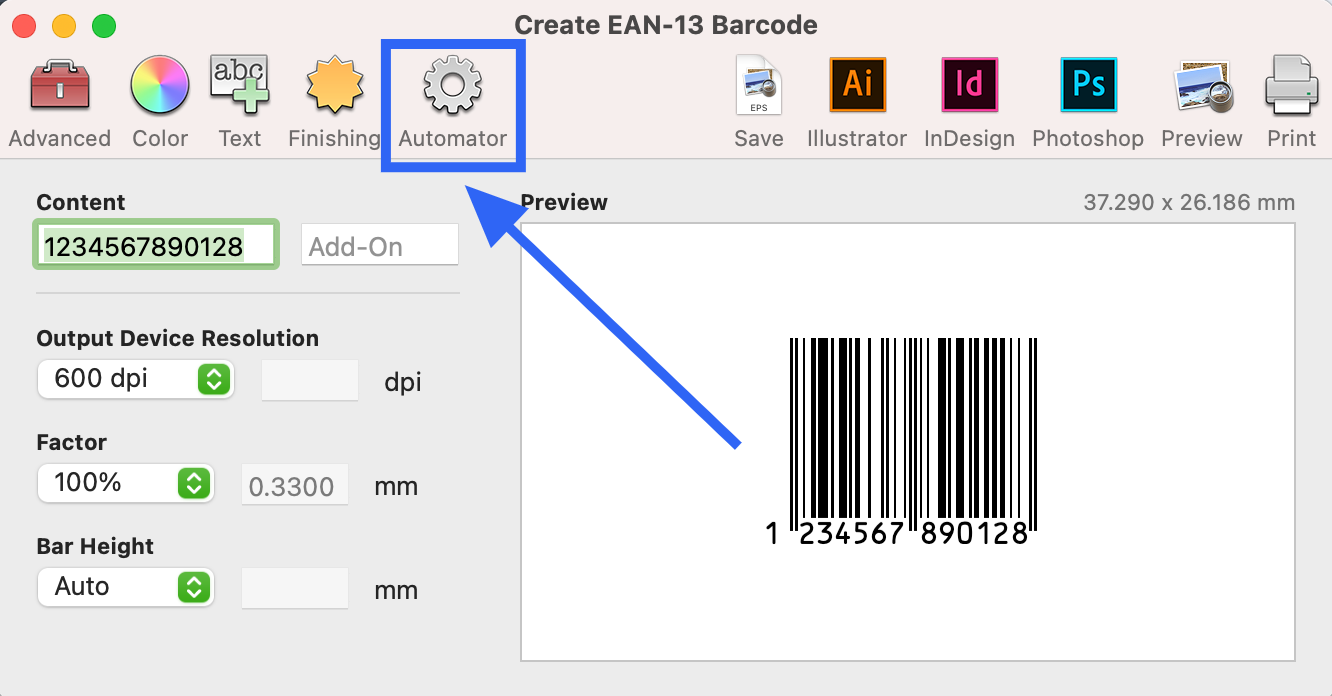
With the Automator Plug-In window open, you can add your barcode values by manually by clicking New Entry, by importing a text file that lists all of the values, or, if all of your values are in numerical order, you can specify a range of numbers and Barcode Producer will generate a list for you. Once you’ve confirmed your Output File Format and File Naming Scheme, click Generate to save all of your barcode files to your computer.
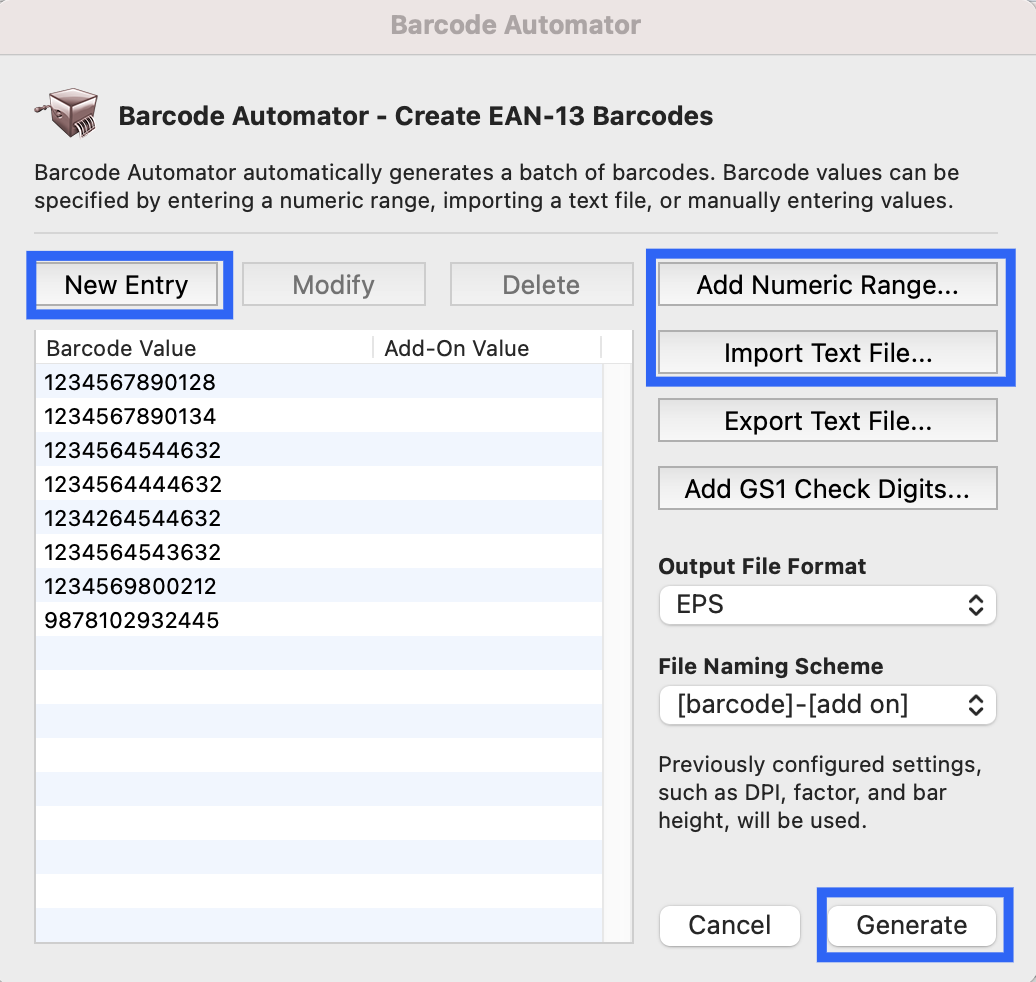
If you’d like to include this list of values in a Shopify CSV product import, simply click Export Text File to save the list to your computer. Then you can copy and paste it right into your product spreadsheet!

Scanning barcodes
If you don’t have a barcode scanner as part of your Shopify plan, you can use most iOS or Android device cameras to scan both 1D and 2D barcodes.
All your mobile, in-store, and online orders appear on the Orders screen of Shopify POS. If you include barcodes on your printed receipts, you can scan the receipt barcodes with a barcode scanner or your device's camera to open the matching order in Shopify POS.
To add an item to the Shopify POS cart, simply tap the item's image in the products grid, or tap the barcode icon (see below)and scan the item's barcode. If the barcode value has been added to a Shopify product as described above, the item will appear.
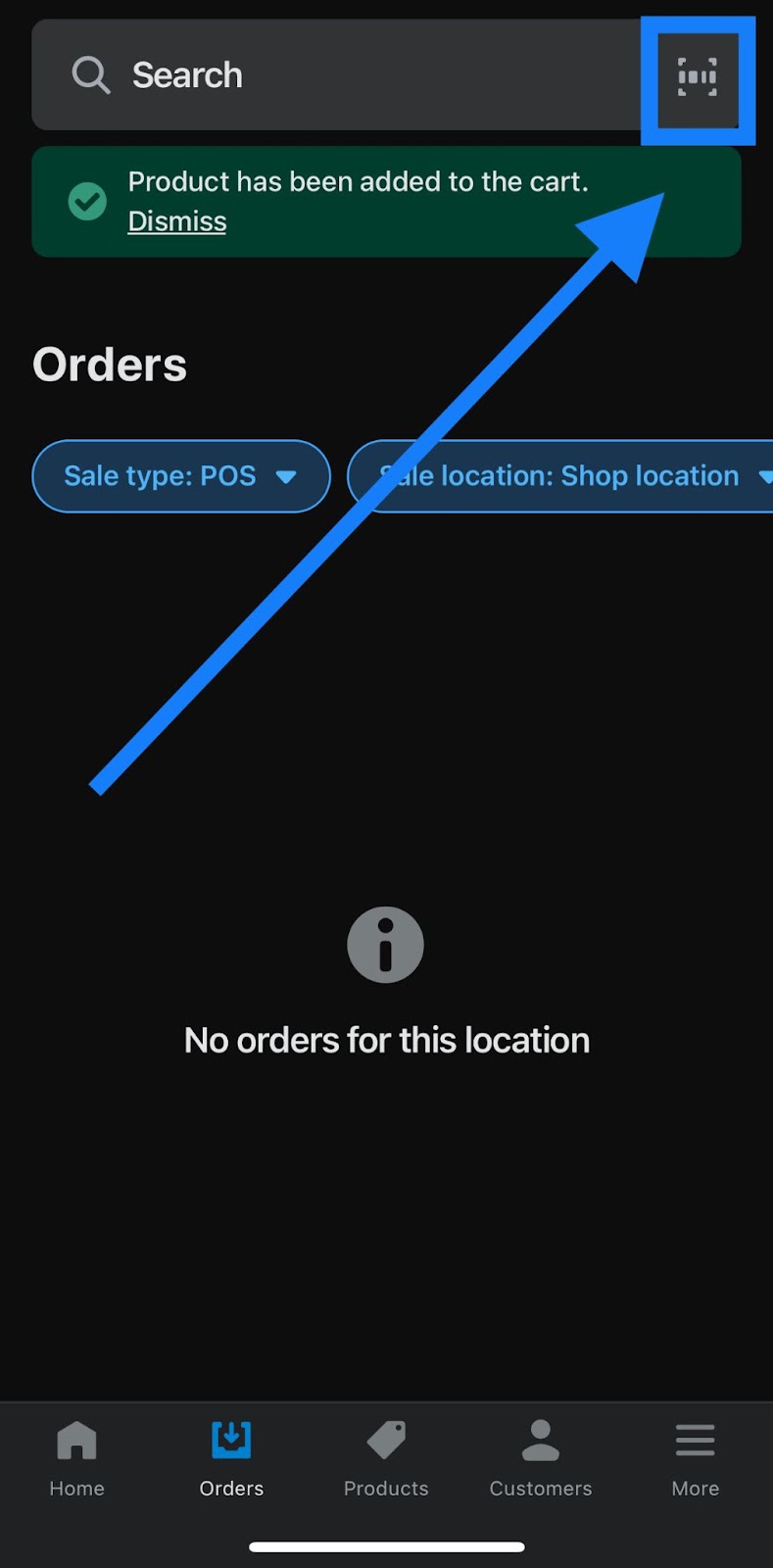
Troubleshooting Barcode Issues
In some cases, Shopify may not recognize UPC barcodes. A common reason this may happen is if a barcode is stored with a leading 0. For any UPC barcodes with a leading 0, simply remove the 0 from the value, and Shopify should then recognize it.
If you're using a Dymo LabelWriter Wireless Printer, the only sizes Shopify will support are the square (1” x 1”) labels with a maximum of six to eight digits. You'll also want to make sure that you've selected the correct label size in your barcode template so that the labels print correctly.



